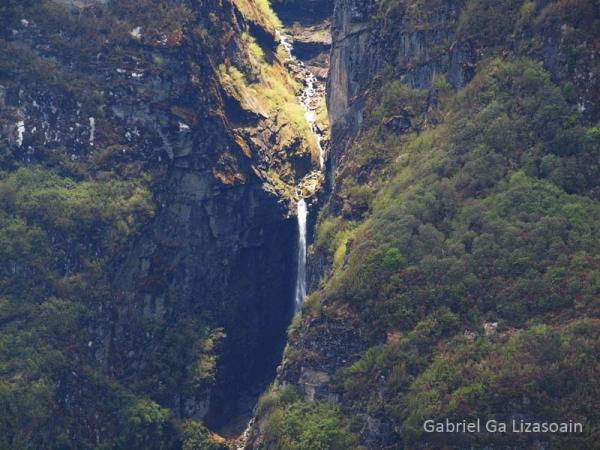Newsletter of the Global Mountain Biodiversity Assessment, July 2013

**********************************************************************
GMBA Workshop on "Integrated assessments for IPBES in the framework of a world-wide high mountain environmental observatory system" at INTECOL conference, London
Wednesday, 21 August 2013, 12:45-14:15, Capital Suite 9
Why do high mountains matter? Alpine ecosystems provide important services to humans. How may global change impact the structure and functioning of these ecosystems and their supply of services? Why should we have comparative integrated assessments of biodiversity and ecosystem services in these ecosystems? Find out the answers to these questions during this workshop that promises to be a vibrant occasion with world-leading authorities as speakers and Q/A session panel members. The event will provide a broad forum for discussing (ideas of) integrated assessments in alpine ecosystems, bringing together soil, climate, hydrology, biodiversity, and land use scientists from across the globe.
- For more information see http://www.intecol2013.org/cms/files/intecol_workshop_sessions_overview_web.pdf and www.intecol2013.org
**********************************************************************
Alpine-arctic conference in Bergün, Switzerland 17-25 Sept 13: deadline extended
First conference: International Tundra Experiment ITEX – More than 20 years of tundra vegetation change research 17. - 20. September 2013.
Second conference: Faster, Higher, More? Past, Present and Future Dynamics of Alpine and Arctic Flora under Climate Change 22. - 25. September 2013.
The deadlines for the two conferences announced in the last newsletter have been extended:
- 12th July 2013: abstract submission for oral and poster presentations ends
- 15th August 2013: registration ends
Further information and updates: http://www.wsl.ch/alpine-arctic-flora
Contact for both conferences: alpine.arctic.conf@wsl.ch Swiss Federal Institute for Forest, Snow and Landscape Research WSL/SLF, Davos
**********************************************************************
Intergovernmental Platform on Biodiversity and Ecosystem Services (IPBES)
The draft work programme of IPBES 2014-2018 and the draft Stakeholder Engagement Strategy are now available for review until 28 July 2013.
- Documents can be found here: http://www.ipbes.net/intersessional-process/current-review-documents-ipbes2.html
You can send your input to us (gmba@unibas.ch), so we can collect all comments and forward it to the IPBES Secretariat; or directly to the IPBES secretariat (secretariat@ipbes.net)
**********************************************************************
Future Earth: Interim Director and Science Committee announced
Frans Berkhout has been appointed Interim Director of Future Earth. Read the press release:
The members of the first Science Committee for Future Earth, the new 10-year research programme on global sustainability, were also recently appointed. The full list of members is available here.
The Science Committee will make recommendations on new and existing projects, and emerging priorities for research. It will, in particular, oversee the transition of the International Geosphere-Biosphere Programme (IGBP), the International Human Dimensions Programme (IHDP) and DIVERSITAS activities into Future Earth.
The following Members are or have been involved in DIVERSITAS in various capacities: Bradley Cardinale (USA), Jane Lubchenco (USA), Belinda Reyers (South Africa) and Sandra Diaz (Argentina).
**********************************************************************
Special issue of Ecography: Patterns and causes of biodiversity in China
Eastern Asia, spanning from tropical to boreal forests and from extreme humid to drylands, with more than 31000 vascular plant species, provides a “natural laboratory” for studying the patterns of species diversity and mechanisms underlying the patterns. A working team led by Prof. Jingyun Fang, Beijing University, explored the patterns in plant species diversity and community structures in China and tested a suite of theories of large-scale biodiversity patterns using precise plot-level data of local ecological communities and species distribution records.
Major results are now presented in 13 research papers in a special issue of Ecography ‘Patterns and causes of biodiversity in China’, Ecography 35(12):1059-1184
The authors explored elevational and latitudinal patterns of species diversity, beta diversity, and structure of forest communities in China’s mountains, evaluated the influences of contemporary climate, topography, regional historical contingencies, dispersal, geometric constraints and spatial scales, and tested a suite of theories of large-scale biodiversity patterns.
See Ecography.
**********************************************************************
Essential Biodiversity Variables
The Group on Earth Observations Biodiversity Observation Network (GEO BON) is leading the development of a set of Essential Biodiversity Variables (EBVs), akin to the Global Climate Observing System Essential Climate Variables (ECVs).
A paper describing the EBV concept has been recently published in Science. It states that reducing the rate of biodiversity loss and averting dangerous biodiversity change are international goals, but there is no global, harmonized observation system for delivering regular, timely data on biodiversity change (Pereira et al. (2013) Science 339,277-278).
GEO BON partners are thus developing (and seeking consensus around) EBVs that could form the basis of monitoring programs worldwide. For more information on EBVs please click here.
GEO BON invites anyone who would like to get involved in EBV development, to take the EBV survey which will run till 31 August 2013. The survey will help gauge how respondents feel about current candidate EBVs and provides respondents with the opportunity to make suggestions for new/alternative EBVs. Complete survey now!
**********************************************************************
Global Mountain Biodiversity Assessment (GMBA) of DIVERSITAS

Facebook comments